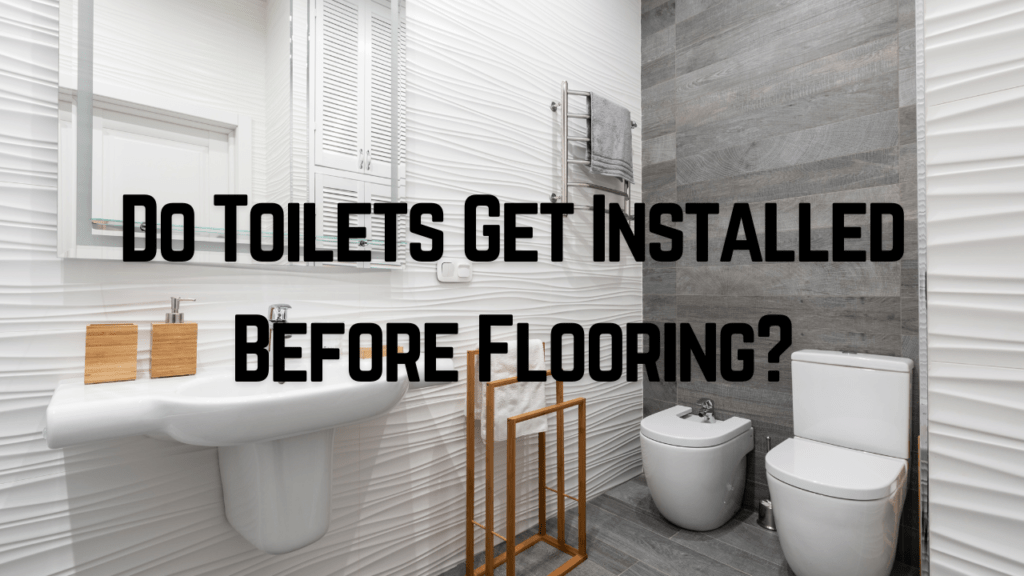
Do toilets get installed before flooring? Discover the optimal sequence for home renovation tasks, including whether toilets should be installed before or after flooring. Get expert insights and tips for a seamless renovation process.
One burning question often arises when starting a home renovation project: Should toilets be installed before or after flooring? It’s a crucial decision that can significantly impact the overall outcome of your renovation. In this comprehensive guide, we’ll delve into the intricacies of home renovation sequencing, providing you with expert insights and valuable tips to ensure a smooth and successful project. Let’s dive in.
Do Toilets Get Installed Before Flooring?
Yes, toilets are typically installed after the flooring is installed during a home renovation or construction project. This sequence allows for precise cuts and fits of flooring materials around the toilet’s base, resulting in a cleaner and more polished appearance.
Assessing the Situation
Assessing your specific renovation needs is essential before we can determine the ideal sequence. Consider the following factors:
Existing Flooring: If you’re working with an existing floor, its condition will be pivotal in your decision. Is the current flooring damaged or outdated? Does it need to be replaced or refinished?
Bathroom Layout: The layout of your bathroom can also influence the order of installation. Is your toilet positioned in a way that allows for easy flooring installation around it, or is it in a tight corner where it might be challenging to fit flooring materials?
Installing the Flooring First
Advantages: In many cases, professionals recommend installing flooring before the toilet. Here’s why:
Precision: Installing flooring first allows for precise cuts and fits around the toilet’s base. This results in a cleaner and more polished appearance.
Seamless Transition: Flooring that extends beneath the toilet provides a seamless transition and a visually appealing finish.
Flexibility: With the flooring in place, you can change the toilet without affecting the flooring.
Considerations: However, there are important considerations when opting for this sequence:
Toilet Removal: Toilets must be temporarily removed during flooring installation. This requires additional labor and time.
Toilet Seal: Ensure the toilet flange is sealed correctly to prevent any leaks or damage to the flooring.
Installing the Toilet First
Advantages: Some scenarios may call for toilet installation before flooring:
Time Efficiency: Installing the toilet first reduces the downtime of your bathroom, allowing it to remain functional during the rest of the renovation.
No Floor Cuts: You won’t need to make intricate cuts in the flooring, simplifying the installation process.
Considerations: Here are key considerations when choosing this sequence:
Floor Finish: You’ll need to be precise with your flooring measurements and ensure a clean finish around the toilet base, often using trim pieces.
Future Changes: Keep in mind that if you ever decide to change the toilet, it may require adjustments to the flooring.
Conclusion
In-home renovation, the order of tasks can significantly impact the outcome. So, should toilets get installed before flooring? While both approaches have their merits, the professional consensus leans toward flooring installation first. It allows for a cleaner, more precise finish and greater flexibility in the long run. However, your specific circumstances and preferences should guide your decision. Always consult with experienced contractors and consider the unique aspects of your renovation project to ensure a successful and aesthetically pleasing outcome. Remember, a well-thought-out renovation plan is the key to a beautiful and functional living space.
